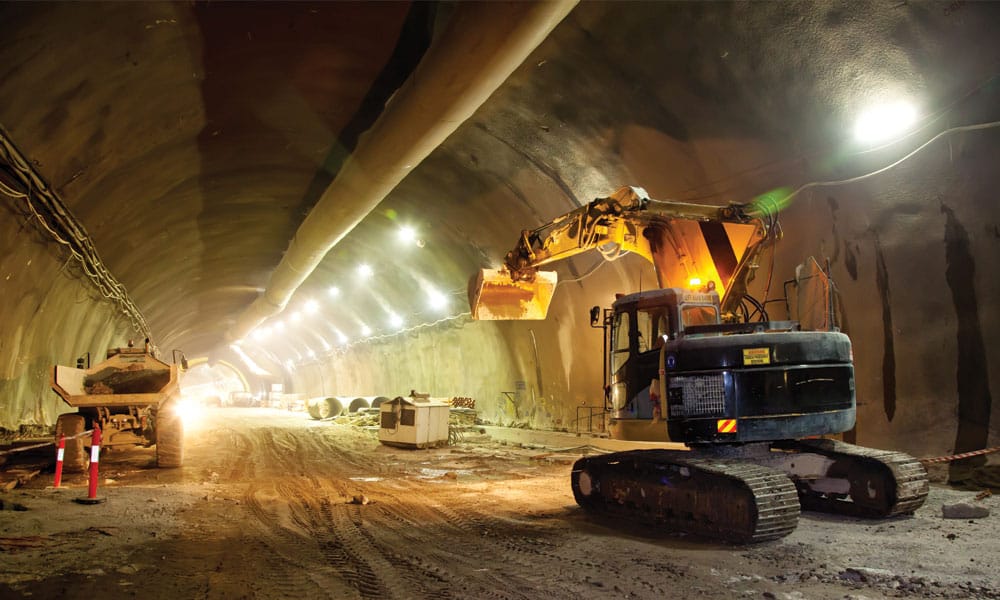Discovering the Benefits of Geotheta for Advanced Geotechnical Investigations
Wiki Article
Diving Into Geotechnical Providers: the Critical Function of Dirt Evaluation, Earthquake Risk Assessment, and Geosynthetics in Structure Sustainable and Safe Structures
Soil evaluation, quake risk assessment, and the execution of geosynthetics are vital elements that guarantee the honesty and long life of structures. By recognizing the structure of the soil, anticipating seismic risks, and integrating cutting-edge materials, engineers can reduce risks and enhance the durability of facilities.
Relevance of Soil Analysis
Recognizing the importance of soil evaluation is essential in making certain the structural honesty and stability of any kind of building project. Soil analysis offers important information regarding the soil make-up, stamina, and potential threats that might influence the structure of a framework. By carrying out extensive dirt analysis, engineers can establish the appropriate foundation style, building and construction methods, and necessary safety measures to minimize any possible risks.One of the primary reasons soil analysis is vital is its role in recognizing soil properties that can affect the security of a structure. Variables such as dirt bearing ability, negotiation characteristics, and water material can dramatically influence the structural efficiency of a construction project. Without correct dirt evaluation, the foundation might go to danger of clearing up erratically, bring about architectural damages or perhaps collapse in time.
Moreover, dirt analysis assists in analyzing the danger of all-natural catastrophes such as earthquakes, floodings, or landslides. By comprehending the dirt's habits under different problems, engineers can implement ideal steps to boost the resilience of the structure and make sure the security of residents. geotheta. To conclude, soil analysis is an essential action in the construction procedure that ought to never be forgotten
Assessing Earthquake Threats
Offered the crucial function of soil evaluation in figuring out architectural stability, it is necessary to also analyze earthquake dangers when preparation and constructing buildings and framework. Quake risk assessment entails reviewing the potential seismic hazards that a website might face based on its area and geological attributes. This process assists designers and developers comprehend the degree of risk positioned by quakes and aids in designing frameworks that can hold up against such occasions.Examining quake dangers commonly involves studying historic seismic activity in the area, determining the website's closeness to mistake lines, and analyzing the soil make-up to anticipate exactly how the ground will certainly react to seismic waves. By carrying out a comprehensive earthquake risk analysis, designers can apply suitable reduction measures, such as integrating seismic-resistant style functions right into structures, to boost their durability versus earthquakes.

Duty of Geosynthetics
Geosynthetics play a crucial duty in improving the performance and longevity of civil design frameworks. One essential element of geosynthetics is their support capability, where they can improve the stamina of dirts, offering boosted support for roads, embankments, and maintaining wall surfaces.They are likewise utilized in drain applications to help with the reliable circulation of water, stopping saturation and disintegration of soil. In enhancement to their technical features, geosynthetics are valued for their sustainability, as they can decrease the requirement for natural sources and reduced construction expenses.
Building Sustainable Frameworks
The application of eco conscious methods in construction is pivotal for promoting the growth of sustainable structures. Building lasting structures entails utilizing materials and style strategies that minimize environmental impact, reduce energy usage, and advertise long-lasting strength. Integrating lasting practices such as utilizing recycled materials, enhancing power efficiency, and applying environment-friendly building certifications like LEED can substantially enhance the environmental efficiency of you could look here a framework.One secret aspect of building lasting frameworks is the efficient use resources. This consists of developing buildings that take full advantage of natural light, ventilation, and insulation to lower the reliance on fabricated lighting, home heating, and cooling systems. In addition, incorporating renewable resource sources such as photovoltaic panels or wind generators can better lower the carbon impact of a structure while also potentially decreasing long-term energy prices.
Additionally, sustainable structures commonly prioritize water conservation by integrating attributes like rain harvesting systems, low-flow fixtures, and drought-resistant landscape design. By embracing these environmentally pleasant techniques, building and construction jobs can not just decrease their ecological effect yet likewise add to developing healthier and a lot more durable built settings for future generations.
Ensuring Safety And Security in Construction
In the world of sustainable construction techniques, an essential top priority is ensuring the security of all workers entailed in the structure procedure. Safety in building encompasses various elements, including the use of correct individual safety tools (PPE), adherence to safety protocols, routine article training on danger recognition and mitigation, and the implementation of emergency reaction strategies.
Conclusion
In final thought, dirt evaluation, earthquake danger assessment, and using geosynthetics play critical roles in guaranteeing the sustainability and security of frameworks. By recognizing the residential or commercial properties of soil, examining earthquake threats, and using geosynthetics for reinforcement, engineers can build structures that are both resilient and resilient. It is essential for construction professionals to focus on these geotechnical solutions to develop sustainable and safe buildings for the future.Dirt evaluation, earthquake danger evaluation, and the execution of geosynthetics are essential parts that make certain the honesty and durability of structures. Dirt analysis supplies crucial info concerning the dirt structure, strength, and possible threats that might influence the foundation of a structure.One of the key factors dirt evaluation is important is its role in recognizing dirt residential properties that could impact the stability of a building.In verdict, soil evaluation, quake threat analysis, and the use of geosynthetics play vital duties in guaranteeing the sustainability and safety and security of structures. By understanding the residential properties of dirt, reviewing quake threats, and making use of geosynthetics for reinforcement, engineers can construct frameworks that are both resilient and resilient.
Report this wiki page